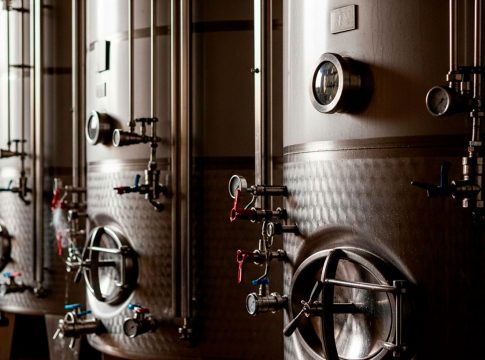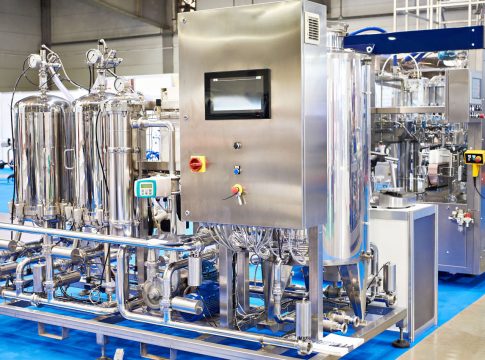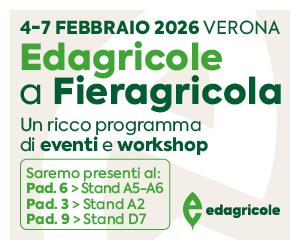
L’uso dei tannini enologici è autorizzato dall’Oiv per la chiarifica di mosti e vini (Codex Œnologique International, Oiv 2012). Essi possono essere di due tipologie: condensati e idrolizzabili, se derivano dall’uva, legno esotico, o noce di galla, castagno, rovere.
I tannini enologici vengono usati anche perché contrastano l’ossidazione del vino e ne stabilizzano il colore (Ribereau-Gayon et al. 2006). Data la loro natura chimica, i tannini sono molecole molto reattive, capaci di interagire con metalli, composti fenolici, macromolecole nel vino. Una volta nel vino, possono partecipare a diverse reazioni, contribuendo differentemente alla stabilizzazione del colore (Pérez-Lamela et al. 2007), formando pigmenti polimerici con antocianine (Castañeda-Ovando et al. 2009; Liao et al. 1992), aumentando la capacità antiossidante del vino (Baiano et al. 2009; Neves et al. 2010), e incrementando (Bautista-Ortín et al. 2007) o no (Rinaldi et al. 2010) la percezione dell’astringenza.
I tannini sono i maggiori responsabili degli aspetti qualitativi dell’astringenza, così come dell’intensità della sensazione. I tannini delle bucce e dei vinaccioli dell’uva sono percepiti come astringenti man mano che aumenta il grado di polimerizzazione e di galloilazione. Quest’ultimo sembra essere il responsabile della sensazione di ruvidità (Vidal et al. 2003) che sembra diminuire all’aumentare della triidrossilazione dell’anello B (dato dalla presenza di epigallocatechina) sulla molecola tannica. Un lavoro recente, al contrario, ha trovato che la presenza di epigallocatechina sembra ridurre la sensazione di astringenza vellutata e aumentare l’aspetto corrugante e disidratante (Gonzalo-Diago et al. 2013). I tannini del legno, invece sono associati sia a sensazioni di morbidezza che di secchezza a basse concentrazioni (Stark et al. 2010).
L’aggiunta di tannini di uva o di legno al vino può dunque modulare diversamente la percezione del vino stesso, e in particolare l’effetto sull’astringenza dipende da molti fattori tra cui la tipologia di tannino, il momento dell’aggiunta (Parker et al. 2007), la quantità (Habertson et al. 2012), e la varietà di uva (Versari et al. 2012). Finora non ci sono stati ancora studi che hanno valutato le subqualità dei vini trattati con tannini enologici. Nel presente studio abbiamo valutato l’effetto dell’aggiunta di tannini enologici sull’astringenza (intensità e subqualità), contenuto fenolico, e parametri del colore di differenti vini italiani monovarietali (Sangiovese, Montepulciano, Barbera, Nero d’Avola) dopo un periodo di affinamento di un anno con tre tannini, a due concentrazioni (10, 20 g/hL). Inoltre è stato determinato l’impatto della varietà sulle subqualità e sulle caratteristiche polifenoliche, e sono state trovate correlazioni tra le subqualità e i polifenoli.
L'ARTICOLO COMPLETO E' PUBBLICATO A PAG. 97 DI VVQ 5/2018 (LUGLIO).
Per approfondire
ARAPITSAS, P., PERENZONI, D., NICOLINI, G., and MATTIVI, F. 2012. Study of Sangiovese wines pigment profile by UHPLC-MS/MS. J. Agric. Food Chem. 60, 10461-10471.
ARES, G., ANTÚNEZ, L., BRUZZONE, F., VIDAL, L., GIMÉNEZ, A., PINEAU, B., BERESFORD, M.K., JIN, D., PAISLEY, A.G., CHHEANG, S.L., ROIGARD, C.M., and JAEGER, S.R. 2015. Comparison of sensory product profiles generated by trained assessors and consumers using CATA questions: Four case studies with complex and/or similar samples. Food Qual. Prefer. 45, 75-86.
ASTM. Standard definitions of terms relating to sensory evaluation of materials and products. 2004. In Annual book of ASTM standards. Philadelphia. American Society for Testing and Materials.
BAIANO, A., TERRACONE, C., GAMBACORTA, G., and LA NOTTE, E. 2009. Phenolic content and antioxidant activity of Primitivo wine: comparison among winemaking technologies. J. Food Sci. 74, 258–267.
BATE-SMITH, E. C. 1954. Astringency in foods. Food Process. Packag., 23, 124–127.
BAUTISTA-ORTÍN, A.B., FERNÁNDEZ-FERNÁNDEZ, J.I., LÓPEZ-ROCA, J.M., and GÓMEZ-PLAZA, E. 2007. The effects of enological practices in anthocyanins, phenolic compounds and wine colour and their dependence on grape characteristics. J. Food Compos. Anal. 20, 546-552.
CAMPO, E., BALLESTER, J., LANGLOIS, J., DACREMONT, C., and VALENTIN, D. 2010. Comparison of conventional descriptive analysis and a citation frequency-based descriptive method for odor profiling: An application to Burgundy Pinot noir wines. Food Qual. Prefer. 21, 44-55.
CASTAÑEDA-OVANDO, A., DE LOURDES PACHECO-HERNÁNDEZ, M., PÁEZ-HERNÁNDEZ, M. E., RODRÍGUEZ, J. A., and GALÁN-VIDAL, C.A. 2009. Chemical studies of anthocyanins: A review. Food Chem. 113, 859-871.
CHEN, J., and ENGELEN, L. 2012. Food oral processing: fundamentals of eating and sensory perception. John Wiley & Sons.
CHEN, K., ESCOTT, C., LOIRA, I., DEL FRESNO, J.M., MORATA, A., TESFAYE, W., CALDERON, F., BENITO, S., and SUAREZ-LEPE, J.A. 2016. The effects of pre-fermentative addition of oenological tannins on wine components and sensorial qualities of red wine. Molecules 21, 1-17.
DE MIGLIO, P., and PICKERING, G.J. 2008. The influence of ethanol and pH on the taste and mouthfeel sensations elicited by red wine. J. Food. Agric. Environ. 6, 143-150.
DI STEFANO R., and GUIDONI S. 1989. “La determinazione dei polifenoli totali nei mosti e nei vini”, Vignevini, 16, 47-52.
GARCIA-ESTEVEZ, I., ALCALDE-EON, C., ESCRIBANO-BAILON, M.T., and PUENTE, V. 2017. Enological tannin effect on red wine color and pigment composition and relevance of the yeast fermentation products. Molecules. 22, 2046.
FLEMING, E.E., ZIEGLER, G.R., and HAYES, J.E. 2016. Salivary protein levels as a predictor of perceived astringency in model systems and solid foods. Physiol. Behav. 163, 56-63.
GAWEL, R., ILAND, P.G., and FRANCIS, I.L. 2001. Characterizing the astringency of red wine: a case study. Food Qual. Prefer. 12, 83-94.
GLORIES, Y. 1984. La couleur des vins rouges. 1° e 2° partie. Connaiss. Vigne Vin. 18, 253-271.
GONZALO-DIAGO, A., DIZY, M., and FERNÁNDEZ-ZURBANO, P. 2013. Taste and mouthfeel properties of red wines proanthocyanidins and their relation to the chemical composition. J. Agric. Food Chem. 61, 8861-8870.
HARBERTSON, J.F., PARPINELLO, G.P., HEYMANN, H., and DOWNEY, M.O. 2012. Impact of exogenous tannin additions on wine chemistry and wine sensory character. Food Chem. 131, 999-1008.
HARBERTSON, J.F., PICCIOTTO, E.A., and ADAMS, D.O. 2003. Measurement of polymeric pigments in grape berry extract sand wines using a protein precipitation assay combined with bisulfite bleaching. Am. J. Enol. Vitic. 54, 301-306.
JAEGER, S.R., CHHEANG, S.L., YIN, J., BAVA, C.M., GIMENEZ, A., VIDAL, L., and ARES, G. 2013. Check-all-that-apply (CATA) responses elicited by consumers: Within-assessor reproducibility and stability of sensory product characterizations. Food Qual. Prefer. 30, 56-67.
KING, M.C., CLIFF, M.A., and HALL, J. 2003. Effectiveness of the ‘Mouth-feel Wheel’ for the evaluation of astringent subqualities in British Columbia red wines. J. Wine Res. 14, 67-78.
LAWLESS, H.T., CORRIGAN, C.J., and LEE, C.B. 1994. Interactions of astringent substances. Chem. Senses. 19, 141-154.
LÊ, S., JOSSE, J. and HUSSON, F. 2008. FactoMineR: An R Package for Multivariate Analysis. J. Stat. Softw. 25, 1-18.
LIAO, H., CAI, Y., and HASLAM, E. 1992. Polyphenol interactions. Anthocyanins: Co‐pigmentation and colour changes in red wines. J. Sci. Food Agric. 59, 299-305.
LORRAIN, B., TEMPERE, S., ITURMENDI, N., MOINE, V., DE REVEL, G., and TEISSEDRE, P.L. 2013. Influence of phenolic compounds on the sensorial perception and volatility of red wine esters in model solution: An insight at the molecular level. Food Chem. 140, 76-82.
MCCABE, C., ROLLS, E.T., BILDERBECK, A., and MCGLONE, F. 2008. Cognitive influences on the affective representation of touch and the sight of touch in the human brain. Soc. Cogn. Affect. Neurosci. 3, 97-108.
MERABET, L., THUT, G., MURRAY, B., ANDREWS, J., HSIAO, S., and PASCUAL-LEONE, A. 2004. Feeling by sight or seeing by touch? Neuron. 42, 173-179.
NEVES, A.C., SPRANGER, M.I., ZHAO, Y., LEANDRO, M.C., and SUN, B. 2010. Effect of addition of commercial grape seed tannins on phenolic composition, chromatic characteristics, and antioxidant activity of red wine. J. Agric. Food Chem. 58, 11775-11782.
NIIMI, J., DANNER, L., LI, L., BOSSAN, H., and BASTIAN, S.E. 2017. Wine consumers' subjective responses to wine mouthfeel and understanding of wine body. Food Res. Int. 99, 115-122.
OBERHOLSTER, A., FRANCIS, I.L., ILAND, P.G., and WATERS, E.J. 2009. Mouthfeel of white wines made with and without pomace contact and added anthocyanins. Aust. J. Grape Wine Res. 15, 59-69.
OIV. Compendium of International Methods of Wine and Must Analysis. 2007. Paris: Office International de la Vigne et du Vin.
OIV. International Code of Oenological Practices. 2012. Organisation Internationale de la Vigne et du Vin, No. 1. Paris.
PARKER, M., SMITH, P.A., BIRSE, M., FRANCIS, I.L., KWIATKOWSKI, M.J., LATTEY, K.A., LIEBICH, B., and HERDERICH, M.J. 2007. The effect of pre‐and post‐ferment additions of grape derived tannin on Shiraz wine sensory properties and phenolic composition. Aust. J. Grape Wine Res. 13, 30-37.
PÉREZ-LAMELA, C., GARCÍA-FALCÓN, M.S., SIMAL-GÁNDARA, J., and ORRIOLS-FERNÁNDEZ, I. 2007. Influence of grape variety, vine system and enological treatments on the colour stability of young red wines. Food Chem. 101, 601-606.
PICARIELLO, L., GAMBUTI, A., PICARIELLO, B., and MOIO, L. 2017. Evolution of pigments, tannins and acetaldehyde during forced oxidation of red wine: Effect of tannins addition. LWT – Food Sci. Technol. 77, 370-375.
PICARIELLO, L., GAMBUTI, A., PETRACCA, F., RINALDI, A., and MOIO, L. 2018. Enological tannins affect acetaldehyde evolution, colour stability and tannin reactivity during forced oxidation of red wine. Int. J. Food Sci. Technol. 53, 228-236.
RIBEREAU‐GAYON, P., GLORIES, Y., MAUJEAN, A., and DUBOURDIEU, D. 2006. In Phenolic compounds, pp. 141-203. John Wiley & Sons, Ltd.
RINALDI, A., GAMBUTI, A., MOINE-LEDOUX, V., and MOIO, L. 2010. Evaluation of the astringency of commercial tannins by means of the SDS–PAGE-based method. Food Chem. 122, 951-956.
SCHÖBEL, N., RADTKE, D., KYEREME, J., WOLLMANN, N., CICHY, A., OBST, K., MINOVI, A., DAZERT, S., WETZEL, C.H., VOGT-EISELE, A., GISSELMAN, G., LEY, J.P., BARTOSHUK, L.M., SPEHR, J., HOFFMAN, T., and HATT., H. 2014. Astringency is a trigeminal sensation that involves the activation of G protein–coupled signaling by phenolic compounds. Chem. Senses. 39, 471-487.
STARK, T., WOLLMANN, N., WENKER, K., LÖSCH, S., GLABASNIA, A., and HOFMANN, T. 2010. Matrix-calibrated LC-MS/MS quantitation and sensory evaluation of oak ellagitannins and their transformation products in red wines. J. Agric. Food Chem. 58, 6360-6369.
TRULSSON, M., and ESSICK, G.K. 1997. Low-threshold mechanoreceptive afferents in the human lingual nerve. J. Neurophysiol. 77, 737-748.
VERSARI, A., TOIT, W., and PARPINELLO, G.P. 2012. Oenological tannins: a review. Aust. J. Grape Wine Res. 19, 1-10.
VIDAL, L., ANTÚNEZ, L., GIMÉNEZ, A., MEDINA, K., BOIDO, E., and ARES, G. 2016. Dynamic characterization of red wine astringency: Case study with Uruguayan Tannat wines. Food Res. Int. 82, 128-135.
VIDAL, L., ANTÚNEZ, L., GIMÉNEZ, A., MEDINA, K., BOIDO, E., and ARES, G. 2017. Sensory characterization of the astringency of commercial Uruguayan Tannat wines. Food Res. Int. 102, 425-434.
VIDAL, S., FRANCIS, I.L., GUYOT, S., MAMET, N., KWIATKOWSKI, M., GAWEL, R., CHEYNIER, V., and WATERS, E. 2003. The mouth-feel properties of grape and apple proanthocyanidins in a wine-like medium. J. Sci. Food Agric. 83, 564–573.
VIDAL, S., FRANCIS, L., NOBLE, A., KWIATKOWSKI, M., CHEYNIER, V., and WATERS, E. 2004. Taste and mouth-feel properties of different types of tannin-like polyphenolic compounds and anthocyanins in wine. Anal. Chim. Acta. 513, 57-65.
WEBER, F., GREVE, K., DURNER, D., FISCHER, U., and WINTERHALTER, P. 2012. Sensory and chemical characterization of phenolic polymers from red wine obtained by gel permeation chromatography. Am. J. Enol. Vitic. 64, 15–25.











